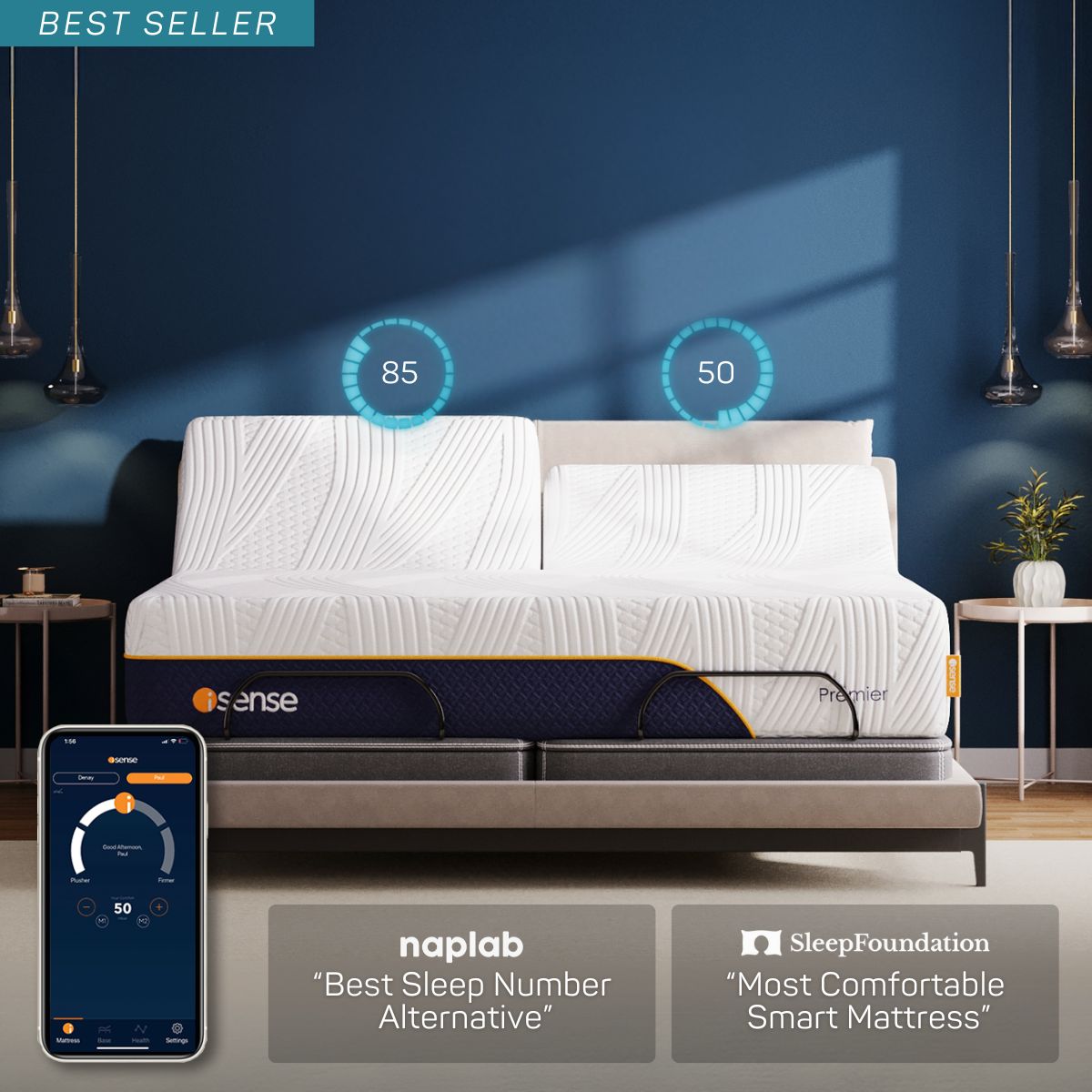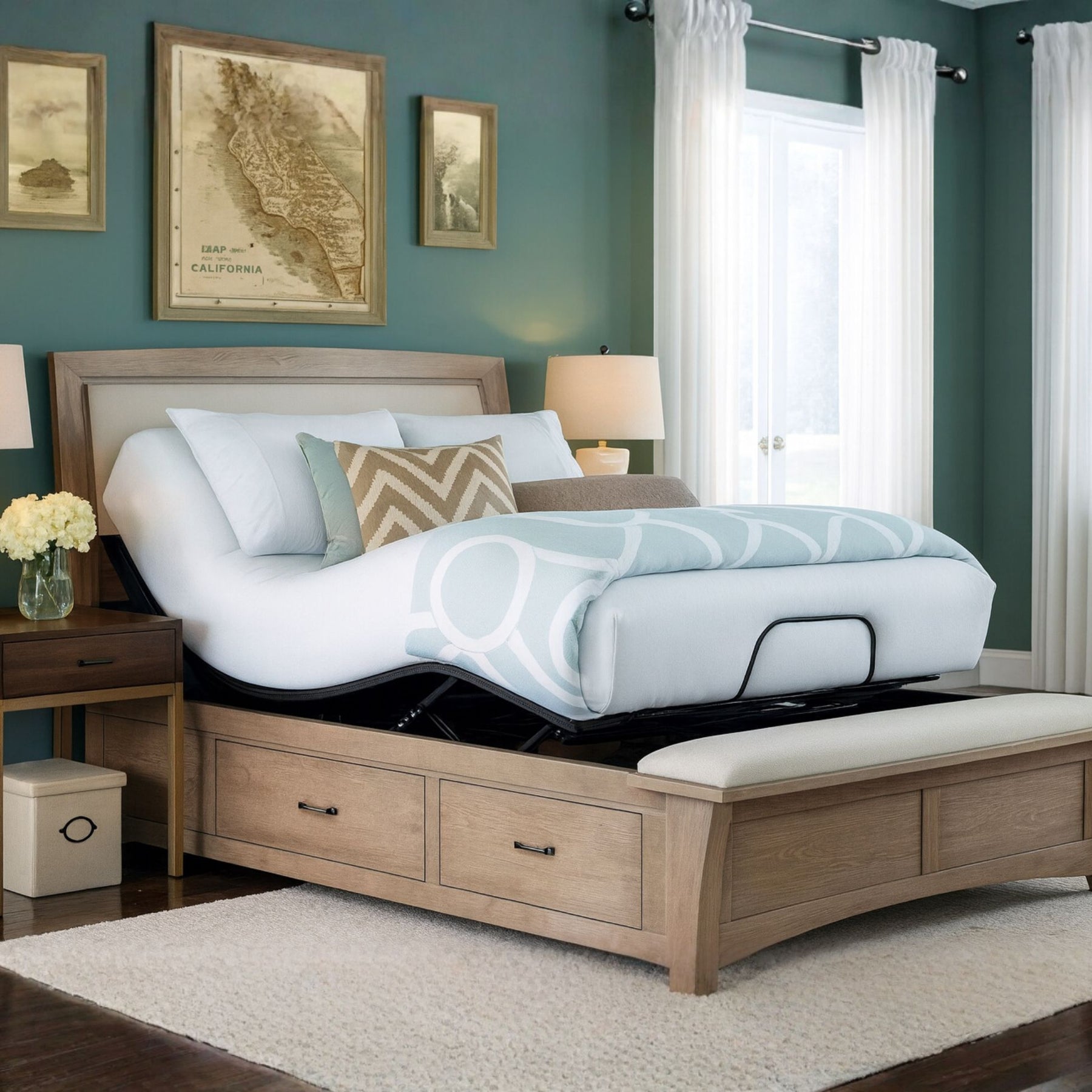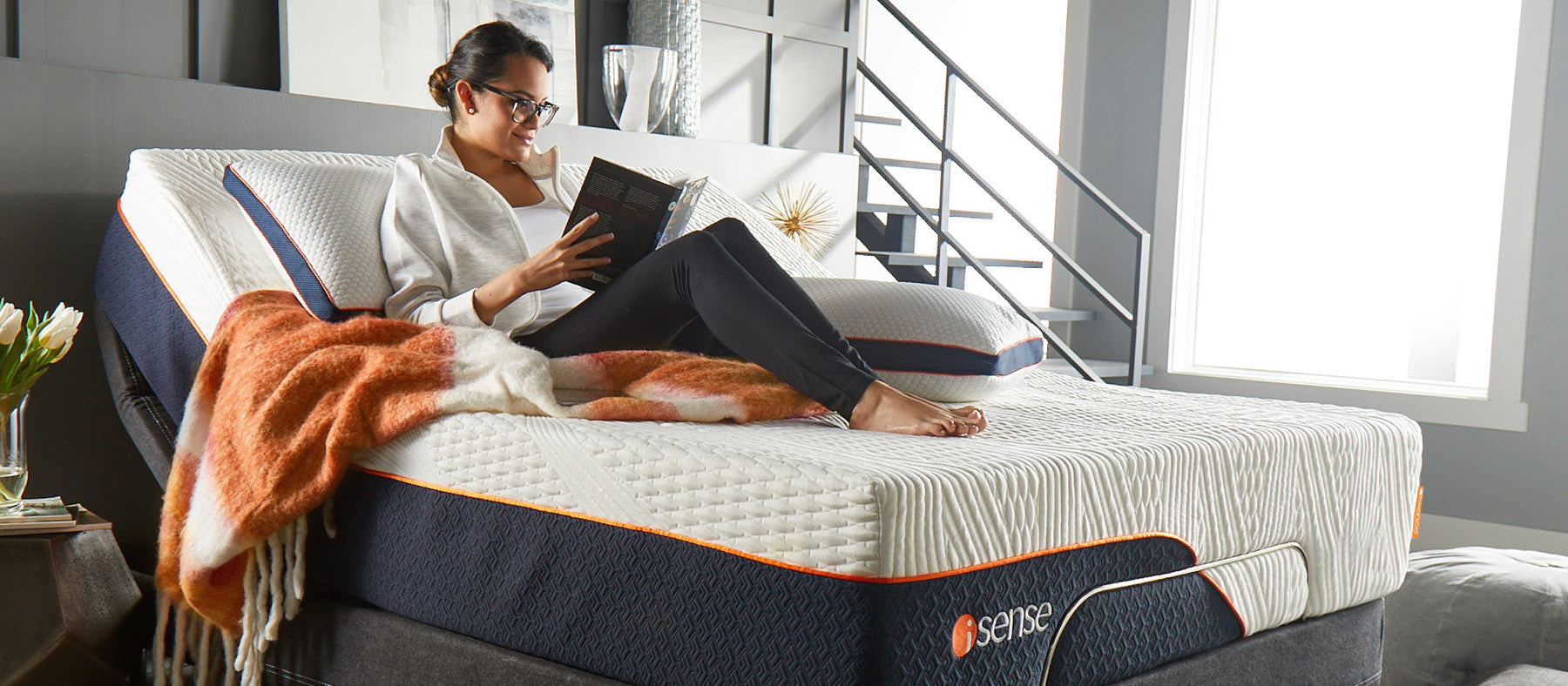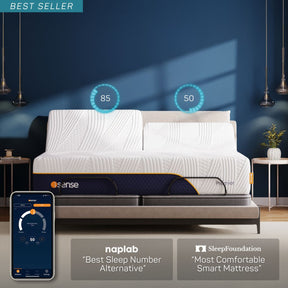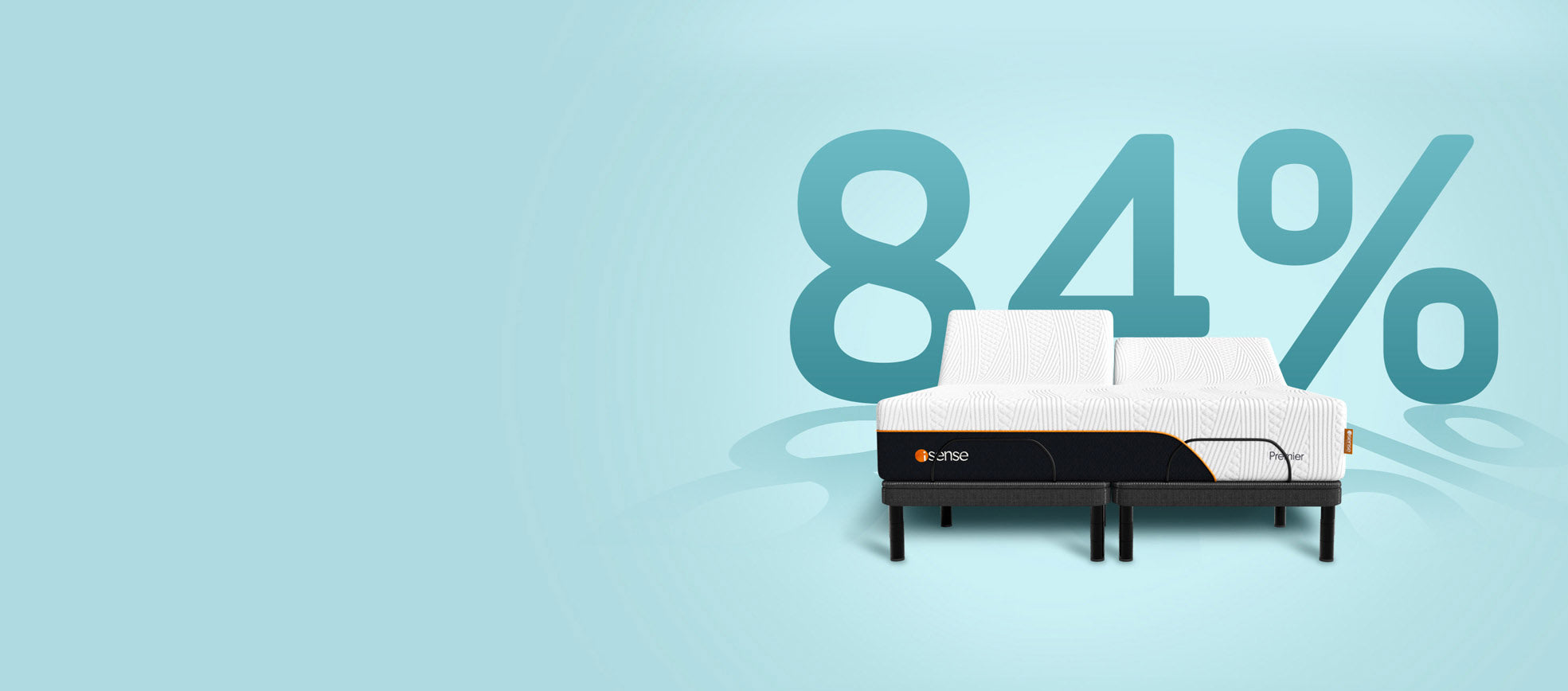If you suffer from chronic back pain, you know how important it is to find the right mattress to alleviate your discomfort. Many mattresses marketed as “ergonomic” and “orthopedic” are nothing more than expensive scams. To get the most bang for your buck, you need to choose a mattress based on the features that are best suited for your unique back pain relief. In this blog post, you’ll find expert advice on how to identify the mattress that is perfect for you. We’ll cover the benefits of pillow top mattresses, firm mattresses, which materials are good for back pain, and other key considerations. As tedious as it may seem, setting aside the time to find the perfect mattress can produce sweet relief in more ways than one. Read on to learn how to ensure you’re getting the comfort and support that your back needs and deserves.
Quick Overview of Key Question
When choosing a mattress for back pain, look for one with adjustable, medium-firm support that cushions and conforms to your body.
What You Need to Consider When Choosing a Mattress
When it comes to choosing the best mattress for back pain relief, there are several factors you should consider. Getting the right level of support is essential, as too little can cause misalignments that lead to discomfort and pain. At the same time, too much support can be hard on natural curves and pressure points. Firmness is an important factor as well, as a mattress that’s too soft won’t provide enough support while one that’s too hard can leave you feeling achy in the morning.
The materials used in the mattress are something else to take into account. Memory foam might reduce stress on your body but some people find it uncomfortable due to its heat retention properties. It is important to choose a foam mattress with open-cell, breathable foam to help prevent overheating. Innerspring is durable and breathable but doesn’t contour to your body like foam does. There’s no one-size-fits-all solution – rather, you have to weigh the pros and cons of different types of mattresses and make an informed decision based on your individual preferences and needs.
Finally, durability should also be taken into consideration, especially if you want your mattress to last longer than the average 10-year lifespan. Firmer mattresses tend to be more durable than softer ones and foam tends to last longer than innerspring models. Knowing what kind of materials are used can give you an indication of how long your chosen mattress will last.
No matter what type of mattress you end up buying, it's important that you feel comfortable and supported when lying down on it. With so many options available, understanding the basic components of a mattress can help narrow down your choices and ensure that you get the best mattress for your needs. As we'll explore in depth in the next section, those needs may be met by any number of potential solutions - from memory foam to adjustable beds - each with their own advantages and disadvantages.
Top Points to Remember
When selecting the best mattress for back pain relief, it is important to consider the different components that you need such as the firmness, materials used, and durability. Memory foam and innerspring are two popular options with pros and cons associated with each. Also, it is essential to carefully assess your individual preferences and needs when determining what kind of mattress you should purchase. There is no one-size-fits-all solution! Durable mattresses tend to last longer than softer ones and foam outlasts innerspring model mattresses. Ultimately, you should buy a mattress based on comfort and support that meets your needs.
Types of Mattresses
The type of mattress you choose is an important decision when seeking relief from back pain. Different mattress materials can provide different levels of support and comfort, depending on the specific needs of an individual. There are many factors to consider when determining the right type of mattress for your needs, such as body weight, sleeping position, existing medical conditions, budget, and firmness preferences.
When discussing which kind of mattress is best for back pain relief, there are arguments on both sides. One camp argues that soft mattresses aren’t supportive enough and allowing the spine to sink into the bed could cause more strain. The other camp believes a softer mattress will hug the body's curves more comfortably and evenly distribute pressure across the surface. Also, some studies suggest that a medium-firm mattress may be most desirable for optimal spinal alignment. However, everyone's individual needs should be taken into consideration first.
No matter what type you opt for, look for quality construction and materials so it can provide adequate support throughout its life span. As you make your choice, keep in mind that regardless of the material or firmness level, the mattress should cradle your body in comfort while providing essential support to help relieve back pain. Taking advantage of at-home, risk-free trials from companies with simple returns to be sure you truly like the feel of your mattress.
Now that we’ve explored the options available when it comes to selecting a quality mattress suitable for back pain relief, let’s take a deeper dive into one popular option – memory foam mattresses.
- A study published in 2016 found that medium-firm mattresses can help reduce lower back pain, providing an improvement in comfort compared to very firm mattresses.
- According to a meta-analysis published in 2017, memory foam mattresses are better for alleviating chronic lower back pain than traditional inner spring mattresses.
- Among patients with low back pain, a systematic review published in 2019 concluded that sleeping on a hybrid mattress may provide superior comfort and spine alignment compared to latex or traditional foam mattresses.
Memory Foam Mattresses
When considering mattresses for back pain relief, many people are drawn to memory foam. Memory foam mattresses are constructed from different kinds of foam and designed to contour to the shape of the person sleeping on it. The material is capable of changing its shape while remaining supportive – a feature that can be beneficial for addressing back pain.
Proponents of memory foam mattresses suggest they offer better support than traditional innerspring mattresses due to the way they conform so closely to the body. There is also evidence that suggests organic versions of memory foam mattresses provide a more breathable surface and increased comfort compared with other mattress types.
On the other hand, opponents of memory foam discuss its potential for heat retention, saying it does not provide good circulation which can lead to an uncomfortable sleeping surface. Some people may also find them too firm, which could be uncomfortable for those who are suffering from back pain. For this reason, finding a mattress made with open-cell breathable foam to help with temperature regulation.
These arguments aside, overall it is easy to see why memory foam mattresses remain a popular choice for those looking for relief from back pain. It is important for each individual to look closer into the features and specs of any mattress available before making a purchase decision, as there is no one-size-fits-all solution when it comes to finding relief from back pain.
No matter what type of mattress you choose, what’s most important is giving yourself time to rest and relax into the proper position with whatever mattress you have chosen. Many people experience great success by alternating between various sleeping surfaces and positions, so experimenting with different styles of mattresses can be beneficial.
Latex Mattresses
While memory foam mattresses offer targeted support that can help relieve back pain, latex mattresses can also be a good choice. Latex is a natural material extracted from rubber trees and is known for its durability and better airflow than memory foam, which could result in less heat buildup in the mattress for a cooler night’s sleep. Latex mattresses are also typically more responsive than foam mattresses with an added bounce; however, they can also be quite firm and may not provide enough pressure relief for those with chronic back pain.
Those who do prefer a firmer mattress should consider a latex mattress, as they tend to hold up better over time than foam models, so they may last longer and provide better performance over time. On the other hand, those who are looking for more significant cushioning while they sleep may want to opt for something with more contour. Before making any purchasing decisions, potential buyers should consider the pros and cons of both types of mattresses to determine which type is best suited for their needs.
Once you have chosen your new mattress, you'll want to ensure you're getting into the correct sleeping positions that aid in relieving or preventing any sharp or persistent back pains. From there, you may want to consider trying other types of mattresses to explore all your options for finding the perfect bed that offers comfort and back pain relief. As such, let’s move on to review other types of mattresses available on the market today.
Other Mattresses
Other Mattresses beyond latex sometimes also provide back pain relief. Innerspring mattresses are the most popular mattress choice and they feature a coil support system. Reviews of innerspring mattresses that provide good lumbar support and adjustable comfort layers offer similar benefits to latex mattresses in terms of providing conforming and targeted pressure relief. Hybrid mattresses, which combine foam and innersprings, are also available. They come in a variety of different materials, designs and more.
Some people find that airbeds and waterbeds are beneficial in relieving back pain, while others might disagree depending on the type of air or water chamber used — as well as its shape — as this could influence how much spinal support is provided. Airbeds usually are constructed with large air chambers on each side which move away from the body when one lies down. This does not offer support, but rather sinks down to create a hammocking effect. You might want to think twice about choosing an airbed.
Overall, it's important to remember that what works for one person might not work for another, so feel free to try out a few different mattress options if you’re experiencing back pain before making your decision. That way you’ll have a much better understanding of what type of mattress is best for you. Be sure to take advantage of at-home trials from companies that are known to have simple return processes. You will be able to tell if a mattress is right for you more effectively if you sleep on it for at least two weeks.
Ultimately, the right mattress choice is dependent on individual sleep posture preferences, body weight, lifestyle and related factors like sleep temperature regulation needs that should all be considered when selecting the most suitable mattress. Now that we’ve explored a few types of mattresses and discussed how they may be beneficial in relieving back pain, let’s move onto what else you can do to ensure you make the optimum choice based on your body type.
Choosing a Mattress Based on Your Body Type
When shopping for a mattress, it is important to consider your body type. Your sleeping style and weight directly influence the type of mattress you should select if you are looking for a supportive sleep surface.
Finally, take into account your partner’s body type when selecting a bed. After all, it is important that both parties find the mattress comfortable and supportive. If there is a large discrepancy between body types, such as one partner being much lighter (or heavier) than the other, opt for an adjustable mattress that can be customized for each person’s needs.
No matter what mattress you choose based on your body type make sure it comfortably aligns with your neck and spine so you can wake feeling refreshed and pain-free.
Neck and Back Alignment
In terms of neck and back alignment, it is important to consider the relationship between your body type and mattress firmness as well. When setting up your positioning on the mattress to achieve optimum spinal alignment, you will want to find something that provides support. If you are a side sleeper or have an average body weight, you may have more of a need for a medium-firm mattress since this will provide the best balance of comfort and support. On the other hand, if you are considered above average in weight, then you should likely opt for a mattress that is firmer so it can accommodate your size more efficiently. The best way to determine which mattress is right for you is to research different types of mattresses and try them out through at-home trials whenever possible.
Making sure that your neck and back are properly aligned while sleeping can be the difference between restful nights of sleep or overall discomfort throughout the night due to poor posture. After taking into account your body type when selecting the best mattress for back pain relief and finding one that offers adequate support for you specifically, it is now time to look towards quality and firmness levels when making a decision. Knowing what qualities and specifications make up a quality mattress can help narrow down your selection and provide you with the information needed for making a confident purchase according to your unique needs.
Quality and Firmness
Once neck and back alignment have been considered, another important factor to consider when selecting the best mattress for back pain relief is its quality and firmness. Generally speaking, mattresses with higher quality and higher firmness are preferable for those who suffer from back pain. This is because these mattresses provide more support for the body's pressure points, cushion the spine more effectively, and absorb minimal amounts of motion, making it ideal for restorative sleep.
Adjustable firmness mattresses such as those made by iSense offer the best for firmness and are a great sleep number alternative. The iSense Classic and iSense Hybrid Premier mattresses offer twenty different firmness settings from soft to firm. You can adjust your mattress firmness night after night according to what you need for your body’s pressure points and health needs.
In any case, determining whether your current mattress or a new one should be firmer or softer can only truly be determined through experimentation. Consider doing a couple of at-home trials from companies with great return policies. Of course, this should always be done with one eye out for the materials—a factor we will discuss more in detail in the next section.
Mattress Materials
When it comes to mattress materials, there is a debate between memory foam and innerspring. While both could provide back pain relief, it really depends on personal preference and the type of pain that is being experienced. Memory foam can sometimes be too soft for back pain sufferers, as the body might sink into the mattress due to some mattress designs. On the other hand, an innerspring mattress can provide some cushioning, but with more bounce.
For those who prefer a firmer solution to back pain, a combination mattress made with layers of foam and innersprings may be the best option. This is called a hybrid mattress. Combining materials will give you both the support and comfort needed while reducing tossing and turning during sleep. This allows your spine to stay properly aligned throughout the night aiding immensely with aches and pains in your back region. Furthermore, research has shown that temperature control mattresses can be especially helpful for those suffering from chronic lower back pain. Therefore, materials designed to keep one's body temperature regulated should also be taken into consideration when making such an important purchase. Many foam mattresses are made with open-cell, temperature-regulating foams to help prevent overheating.
Making sure you consider all of your options before making your purchase is important for overall back pain relief so do your own research. With research and experimentation one can find the ideal combination of materials that fit their unique needs while ensuring they get restful sleep night after night resulting in less aches and pains in the morning.
Having discussed how quality and material play an important role when trying to alleviate back pain with a mattress, it is time to focus on pillowed-top memory foams; a technology designed for those looking for extra comfort without sacrificing support.
Pillow-Top Memory Foam Mattresses
Pillow-top memory foam mattresses are becoming increasingly popular when it comes to back pain relief. They are the perfect combination of comfort, support, and spinal alignment — all of which are important factors in achieving a comfortable sleep.
The main benefit of pillow-top memory foam mattresses is that they conform to the contours of your body, allowing for optimal spinal alignment. As your body weight presses down on the mattress, it will gently contour around your body so that your spine is supported with minimal pressure. This relieves any pressure points that can occur in other types of mattresses and helps relieve tension from your neck and back muscles.
On the negative side, some argue that pillow-top memory foam mattresses lack sufficient airflow, which can lead to heat retention and an uncomfortable sleeping surface. Memory foam also tends to be less durable than traditional inner spring mattresses, making them more prone to wear and tear over time. That being said, recent advances in the manufacturing process have resulted in higher quality memory foam materials with increased air flow channels — helping alleviate these concerns. Additionally, many brands offer a 10-year warranty so that if premature wear does occur you should be able to get a replacement from the manufacturer.
In summary, pillow-top memory foam mattresses are a great choice for relieving back pain due to their ability to keep your spine in proper alignment throughout the night. While some concerns about heat retention and durability exist, recent developments in technology have helped address those issues — making them a safe and effective way to achieve long lasting back pain relief.
Most Common Questions
Are there particular mattress types or materials that are better suited for people with back pain?
Yes. Certain mattress types, such as memory foam, latex and hybrid mattresses, are better suited for people with back pain because they provide support in the areas where extra cushioning is needed while also providing pressure relief to alleviate pain. Memory foam offers superior conforming properties that help relieve pressure points and improve spinal alignment, while a latex mattress provides natural springiness and responsive bounce for a comfortable night’s sleep. Hybrid mattresses combine the comfort of a memory foam mattress with the support of an innerspring mattress, resulting in superior motion isolation, overall support and contouring relief. All of these mattress types can be beneficial for those who suffer from back pain and other musculoskeletal issues.
iSense offers adjustable firmness mattresses in all-foam and hybrid versions. Each mattress offers twenty different comfort settings with consistent pressure relief at every setting. This provides you with options to adjust your firmness day-to-day as your back requires.
What factors should I consider when selecting a mattress to address my back pain?
When selecting a mattress to address back pain, it is important to consider your sleeping preferences and habits. This means that you should identify whether you are a side sleeper, back sleeper, or stomach sleeper since different sleep positions require different levels of support. Additionally, you should think about the type of mattress you prefer. Some people opt for memory foam mattresses because they help reduce pain while allowing air circulation. Others may choose innerspring mattresses, which provide plenty of support with their coil structure and are more cost-effective than memory foam.
Those who suffer from chronic back pain should also look into adjustable firmness beds, which allow personalized comfort and pressure relief in the lower back area. iSense offers adjustable firmness mattresses with 180-night risk free trials. You can sleep on the mattress for weeks to determine whether the feel matches your preferences!
Are there any special features I should look for in a mattress for back pain relief?
When shopping for a mattress for back pain relief, it’s important to look for specific features that can provide the support your body needs. Some key features include:
1. Firmness - Generally speaking, firmer mattresses are better for those suffering from back pain, providing more support and helping to evenly distribute body weight. However, everyone is different and individual preference should be taken into account; some people may find a softer mattress more comfortable. Adjustable firmness mattresses like those by iSense offer twenty different settings from soft to firm.
2. Contouring - Pressure relief is essential when selecting the right mattress for back pain; look for beds that contour to the shape of your body providing additional cushioning and ensuring joints and muscles receive the stress relief they require.
3. Temperature Control - Look for mattresses that feature cooling technology, such as gel foam or cooling fabrics, to help regulate your temperature as you sleep. This is an especially important feature if you tend to overheat during the night.
4. Edge Support - Edge support ensures the entire mattress provides consistent support, rather than having a more supportive center surrounded by weak edges; this helps keep your spine in proper alignment all night long.
These are just a few of the features to consider when choosing the best mattress for back pain relief. You also want to consider the quality of customer service from the company. Read real customer reviews to ensure that the company honors the return policy and makes it simple to return the mattress if you need to. You don’t want to be stuck with a mattress you don’t want!
iSense offers adjustable firmness mattresses so you can choose your perfect level of firmness for sleep as your body and sleep needs change.





